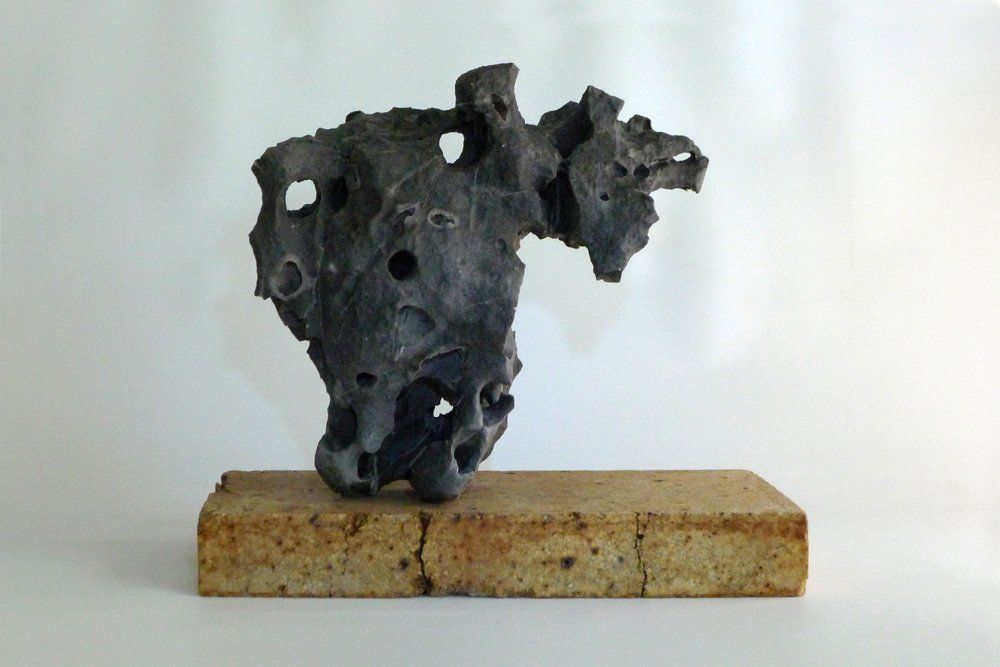Elephas
By Joe Grande
This karst limestone, evocative of a fantastical beast, comes from Vancouver Island, Canada. It is balanced and offset on a base that is a refractory brick made at the Claybank Brick Plant, Saskatchewan, Canada. Both the charcoal-grey limestone and the clay in the refractory brick base are products of sedimentation. The limestone’s organic shape was caused by dilute acidic groundwater erosion, leading to its flowing karst form, complete with holes. The limestone was submerged in hydrochloric acid for 2 seconds, causing the light steel-grey color to darken dramatically.
The clay for the brick base comes from the Massold Clay Canyons in Saskatchewan, Canada. The Massold Canyons are part of the Whitemud geological formation formed in the late Cretaceous period and found throughout the plains of southern Saskatchewan, southeastern and south-central Alberta. These fire bricks are a product of early 20th-century industrialism created by an elaborate manufacturing process that includes intense heat and pressure. The Claybank Brick Plant made the fire bricks that insulated the NASA rocket launch pads at Cape Canaveral, Florida.
limestone and fire brick
20cm H, 22cm W, 11 m D


